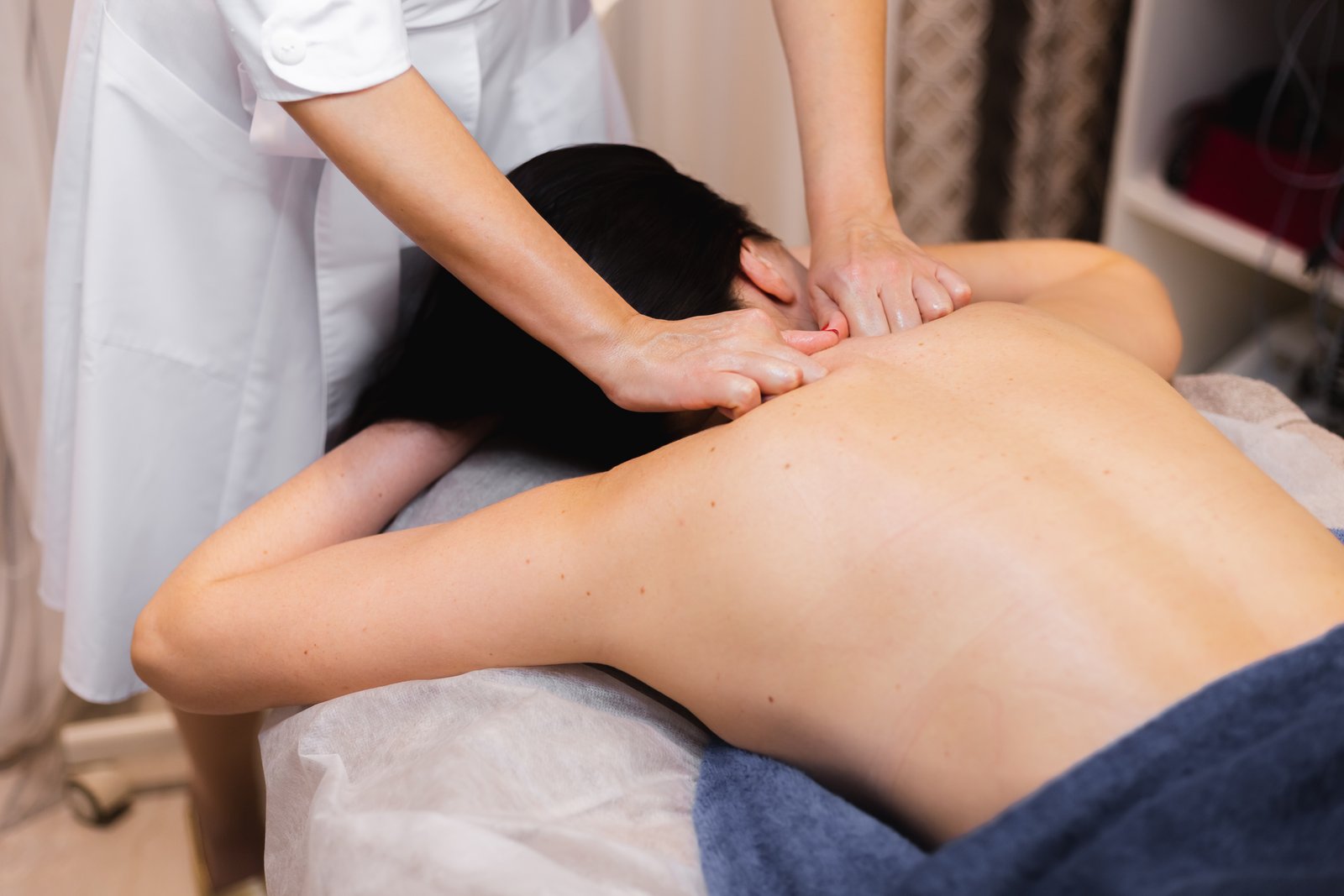Post-Work Massage Therapy
Post-Work Body Therapy A Key to Relaxation and Well-Being
In today’s world, where many people face long working hours and stress from heavy workloads, post-work body therapy has become an essential practice not to be overlooked. This is particularly true for individuals with desk jobs, such as those working on computers or in poor postures for long periods. These factors can lead to muscle stiffness and joint pain.
Post-work massage therapy is an effective way to restore the body from the stress and fatigue accumulated during prolonged work hours. Massage helps stimulate blood circulation, reduce muscle tension and pain, and promote relaxation and energy replenishment, preparing the body for the next day’s activities.
Not only does post-work massage reduce stress, but it also helps restore balance to both the body and mind, enabling individuals to return to work with renewed energy and efficiency. Therefore, massage therapy is a vital tool for maintaining health and improving the quality of life after a hard day’s work.
The Impact of Prolonged Work Hours
Sitting for long periods or working in improper postures can have significant effects on the body, especially when one stays in the same position without moving or adjusting posture. Common issues from prolonged work include back pain, neck pain, and muscle spasms, which can affect both short-term and long-term health.
Back Pain
Sitting for extended periods in poor posture, such as slouching or sitting without proper lumbar support, can lead to back pain, particularly in the spine and muscles supporting the body’s weight. This improper sitting posture restricts blood circulation, leading to muscle spasms in the back and neck area.
Neck and Shoulder Pain
Long hours of looking at computer screens or documents can cause neck and shoulder muscles to tighten. Holding the neck in uncomfortable positions for extended periods, or sitting with hunched shoulders, increases the load on these muscles, resulting in pain and discomfort.
Muscle Spasms
Prolonged sitting or working in improper postures can cause muscle spasms, especially in the back, neck, shoulders, and upper back. Muscle spasms often occur when muscles cannot relax naturally, such as from repetitive use without sufficient rest or poor posture. This leads to muscle imbalance or fatigue.
Poor Blood Circulation
Sitting all day can lead to poor blood circulation, particularly in the legs, causing swelling or fatigue in the lower limbs. Insufficient blood flow to other parts of the body prevents muscles from receiving adequate oxygen and nutrients, leading to pain and stiffness.
Psychological Effects
Long working hours not only affect the body but can also have psychological impacts. Prolonged sitting can increase stress and anxiety, as well as the cumulative pressure from heavy workloads. This mental strain can leave the brain feeling fatigued, hindering productivity and focus.
Conclusion
Sitting all day without moving or adjusting posture can have a range of negative effects on both physical and mental health. These include back pain, neck pain, muscle spasms, and poor blood circulation. To prevent these issues, it’s crucial to maintain proper posture and take regular breaks to move the body, which will help alleviate stress and muscle fatigue.
Benefits of Therapeutic Massage
Therapeutic massage is one of the most effective methods for maintaining both physical and mental health after prolonged work hours. In addition to helping relax muscles, massage offers various benefits that positively impact the body, including stress reduction, improved blood circulation, increased muscle flexibility, and enhanced energy levels.
Muscle Relaxation
Massage helps release tension in muscles caused by prolonged sitting or improper posture. Tensed muscles are relaxed, alleviating pain and discomfort. It also helps reduce muscle stiffness or soreness from overuse effectively.
Stimulates Blood Circulation
Massage stimulates blood circulation in the body. Good circulation helps deliver nutrients and oxygen to muscles and tissues, speeding up the body’s recovery. Additionally, improved blood flow can reduce swelling and enhance overall energy.
Reduces Stress
Therapeutic massage has significant psychological effects, as it triggers the release of stress-relieving hormones such as endorphins. These hormones help us feel more relaxed and happier. Massage also reduces the production of cortisol, the stress hormone, calming the mind and reducing anxiety.
Increases Muscle Flexibility
Massage improves muscle and joint flexibility. Using proper massage techniques, tight or shortened muscles from poor posture can be stretched, enhancing flexibility and ease of movement. This also reduces the risk of injury during daily activities.
Boosts Energy Levels
After a massage, the body feels refreshed and energized due to the stimulation of the nervous system and blood circulation. With better oxygen and nutrient transport throughout the body, you will feel more revitalized.
Alleviates Chronic Pain
For those suffering from chronic pain, such as back, neck, or shoulder pain, therapeutic massage can help alleviate these issues. It relaxes tense muscles and stimulates blood flow to the affected areas, reducing pain and speeding up recovery.
Promotes Better Sleep
Massage helps reduce stress and relax the body, which leads to better sleep quality. It helps reduce waking up in the middle of the night and allows the body to fully recover during sleep.
Strengthens the Immune System
Massage stimulates the lymphatic system, which plays a vital role in eliminating toxins and waste from the body. This activation of the lymphatic system strengthens the immune system, making the body more capable of fighting diseases.
Conclusion
Therapeutic massage not only relaxes muscles and reduces stress, but it also offers many other important benefits, such as improved blood circulation, increased muscle flexibility, enhanced energy, and chronic pain relief. It is a powerful tool for restoring both physical and mental well-being, allowing for more efficient work and daily life.
Post-Work Massage Therapy: Techniques to Relieve Tension and Fatigue
Post-work massage therapy is an effective way to relieve soreness and tension accumulated during long hours of work. Massaging specific areas of the body helps reduce fatigue and promotes relaxation. In this guide, we will discuss various massage techniques suitable for post-work recovery, such as neck and shoulder massage, back massage, foot massage, and the use of essential oils.
1. Neck and Shoulder Massage
The neck and shoulders often experience tension from sitting in front of a computer or maintaining poor posture for extended periods. A neck and shoulder massage can help relieve this tension and prevent stress-related headaches.
How to Massage Neck and Shoulders:
Begin by gently pressing the muscles along the sides of your neck and shoulders with your fingertips.
Apply moderate pressure and move your fingers up and down, focusing on tight muscle areas.
Use your thumb and index finger to gently knead the muscles to further relax tension.
Massage for 5-10 minutes or until you feel more comfortable.
2. Back Massage
A back massage helps relieve back pain and reduce muscle tension caused by improper sitting posture or prolonged standing. It also stimulates blood circulation and improves muscle flexibility.
How to Massage the Back:
Start by gently pressing along the shoulders and spine with your fingertips, gradually increasing pressure as you move from the middle of your back to the sides and lower areas.
Use both palms to stroke along the spine to enhance blood flow.
Gradually increase pressure on tight muscles, using one palm to press down while the other moves up along the spine.
Massage for about 10-15 minutes.
3. Foot Massage
Our feet often bear the burden of prolonged standing or walking, especially after long hours of work. Foot massage is an excellent way to relax the body and reduce fatigue.
How to Massage the Feet:
Begin by massaging the soles of your feet, gently pressing the middle of the soles and the arch with your fingers or thumbs.
Use both hands to knead and circle the bottom of the feet to stimulate circulation.
Additionally, you can press and rotate your thumbs on different points of the feet, such as under the ankle, to help relax further.
Massage the feet for at least 10-15 minutes to promote relaxation.
4. Essential Oil Massage Techniques
Using essential oils during a massage can enhance relaxation and reduce discomfort. Essential oils like lavender or rosemary also help relieve mental stress and promote emotional well-being.
How to Massage with Essential Oils:
Choose an essential oil you enjoy, such as lavender, eucalyptus, or rosemary, which are known for their calming properties.
Place 2-3 drops of essential oil into your palms and rub them together to warm the oil before applying it to your skin.
Begin massaging areas of tension, such as the neck, shoulders, or back, using the essential oils to aid in relaxation.
Massage in a way that feels relaxing, using just the right amount of oil to avoid excess greasiness on the skin.
Summary
Post-work massage therapy can effectively alleviate fatigue and tension from prolonged working hours. Techniques like neck and shoulder massage, back massage, foot massage, and essential oil massage all promote blood circulation, relieve muscle soreness, and enhance overall relaxation. Regular massages after work can help rejuvenate the body and mind, leaving you refreshed and ready to continue your tasks.
If interested, you can contact us at
LINE : similan98831
Email : similanmaiya@gmail.com
Phone number : +66 994-769-669
Copyright © Similan Thai Massage
 similan98831
similan98831 +66 994 769 669
+66 994 769 669 +66 994 769 669
+66 994 769 669 Click Now
Click Now


